Scarlet Macaw: Bird Species Profile
Widely regarded by bird lovers as the most beautiful parrot, scarlet macaws are among the most colorful. They have large solid swatches of red, blue, and yellow feathers. This flashy, gutsy bird is full of energy and has a big personality. This large parrot easily makes the list of most popular parrots every year.
Species Overview
Common Name: Scarlet macaw
Scientific Name(s): Ara macao with two subspecies: Ara macao cyanoptera (Central America) and Ara macao macao (South America)
Adult Size: 35 inches long, weighing 2 to 3 pounds
Life Expectancy: 80 years or more, though 40 to 50 years is more typical
Origin and History
Scarlet macaws are native to the tropical rainforest areas of Central and South America. Its preferred habitat is humid evergreen forests at elevations from about 1,000 to 3,000 feet. In the wild, it dwells mostly in the canopy and topmost layers of the trees.
This species has an extensive natural range, but it is threatened in many areas due to deforestation and illegal trapping for the pet trade. The scarlet macaw is on the CITES (Convention on International Trade in Endangered Species) Appendix 1 list. The commercial trade of these wild birds is forbidden, which means the import of these birds to the U.S. is illegal.
Temperament
The scarlet's striking plumage may be what initially draws your attention, but its personality keeps you enthralled. Scarlet macaws are intelligent birds with an abundance of energy and character.
Scarlet macaws that have been hand-raised or hand-trained can be very affectionate. They make great companions with a sweet disposition.
In the wild, scarlet macaws live in small flocks. If you keep this bird as a lone pet, you become its flockmate and can form a strong bond. To keep this bird as a tame housemate, you will need to be attentive and interact with it every day. If not properly trained and socialized, it can become aggressive and destructive.
Scarlet macaws are idiosyncratic birds that may become fixated on one person. To avoid this behavior, train them from an early age to socialize with every family member.
This bird's impressively large beak is powerful. If provoked, it can bite. This bird may not be a great fit for families with children who are too young to understand bird warning signs or boundaries.
Scarlets, like all macaws, are noisy at times. They can learn how to talk, although its blue and gold macaw cousin is known to be the more prolific talker.
Speech and Vocalizations
Confident and friendly, scarlets are usually eager to learn tricks and develop a vocabulary of 5 to 10 words. Scarlets can get extremely loud which may make them a questionable choice for those living in apartments or condominiums. If you are sensitive to loud noises, you might want to think about getting another bird species.
Scarlet Macaw Colors and Markings
Scarlets are mostly vivid red with bright yellow and blue edging on their wings. Some birds may have a band of green where the yellow meets the blue. The large eye patch is white, and the bill has a horn-colored upper mandible and a black lower mandible. There is no obvious way to tell apart the males from females; to figure this out, the bird needs genetic or surgical sexing.
Caring for the Scarlet Macaw
Macaws are the largest of the parrots. A scarlet macaw is best suited for a large space and will not thrive in a cage that is too small. Get a cage that is at least 2 1/2 feet by 3 feet. It needs a lot of out-of-cage time, and if it doesn't get it, the bird may develop behavioral problems. It will resort to feather-plucking and other forms of self-mutilation. They can get bored quite easily, so provide them with large swings and toys.
Once a week, offer your macaw a bath or hose down your bird with lukewarm water using the fine-mist setting of your handheld shower sprayer.
To prevent your bird from flying through an open window or door, trim its primary wing feathers.
Common Health Problems
Scarlet macaws, like other large parrots, are prone to self-mutilation and feather plucking when they are bored or neglected.
These birds are susceptible to a variety of nutritional disorders and diseases, such as macaw wasting syndrome (proventricular dilation disease), parrot fever (psittacosis), and psittacine beak and feather disease (viral infection).
Overgrown beaks are also sometimes a problem; this can be prevented if you provide hard chewable toys and rough surfaces for the macaws to trim their beaks.
Diet and Nutrition
Nuts, leaves, berries, and seeds from the rainforest make up the bulk of the scarlet macaw's diet. Its strong, hooked beak is perfect for breaking nuts and seeds.
The best diet for a macaw in captivity begins with a formulated parrot mix that includes a variety of seeds, dried fruits, and nuts. Provide a variety of fresh fruits and vegetables daily, as well as high-calcium greens like kale and spinach. An all-seed diet is extremely unhealthy for these birds. Never offer chocolate and avocado, which are toxic.
The average healthy macaw will consume approximately 10 to 15 percent of its body weight daily. An average bird weighs about 2 pounds. You can expect a bird will eat about 1/2 cup of food per day, which equates to about 100 pounds of food per year. Feed them in the morning upon waking. Remove any uneaten chop or freshly cut fruits and vegetables after an hour.
Exercise
Macaws are large birds and need ample space and time to play and stretch their muscles. These are active birds by nature. These birds need the means to burn off energy. A scarlet macaw should be allowed outside of the cage for at least two hours a day; five hours is optimal.
Rotate a varied supply of chew toys to help it exercise its powerful beak and jaws. Rugged toys that can take a beating help the jaw muscles while providing an outlet for the chewing instinct.
A play gym or a parrot cargo net that allows your macaw to play and climb can be a great activity to help your bird meet its exercise requirements.
Beautiful and intelligent
Can talk and mimic human sounds
Long-lived
Tendency for loud squawks and screams
Requires at 2 to 5 hours of daily exercise, mental stimulation
Where to Adopt or Buy a Scarlet Macaw
Scarlet macaws are usually sold only at avian specialty pet stores or by breeders. They can cost $2,000 to $4,000. The price range is dependent on the breeder, if it was hand-raised, and its vibrancy.
Rescues or adoption agencies may get this bird given up by owners unable to care for them. Some online sources you can try include:
- Bird Breeders
- Free Flight
- Adopt a Pet
If you're going the breeder route, ask the breeder long they have been breeding and working with the species. Tour their facility. When perusing their inventory, look for signs of good overall health of the flock. The birds should be active and alert with bright eyes, clean feathers, and full crops.
More Pet Bird Species and Further Research
If you’re interested in similar species, check out:
- Green-Wing Macaw Species Profile
- Harlequin Macaw Species Profile
- Hyacinth Macaw Species Profile
Otherwise, check out all of our other macaw species profiles.
RECOMMENDED NEWS
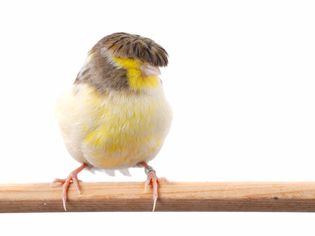
Gloster Canary: Bird Species Profile
Gloster canaries are small birds that are bred for their shape instead of their colors or song. The...
Read More →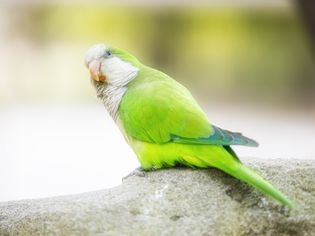
7 Interesting Facts About Quaker Parrots
Often referred to as "clowns," Quaker parrots are known for their fun-loving, comical personalities...
Read More →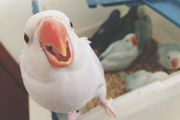
How to Teach Your Pet Bird to Talk
Some species of birds have an amazing talent for vocalizations. If you have one of these species, y...
Read More →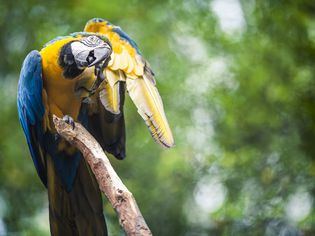
How to Identify and Get Rid of Parrot Lice
We know that birds are susceptible to many of the same health problems that can affect people, incl...
Read More →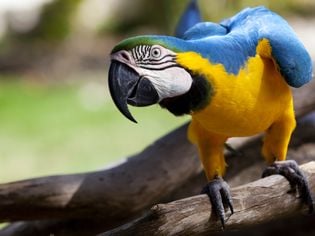
Psittacosis (Parrot Fever) in Birds
Also known as parrot fever or avian chlamydiosis, psittacosis is an avian disease that many bird ow...
Read More →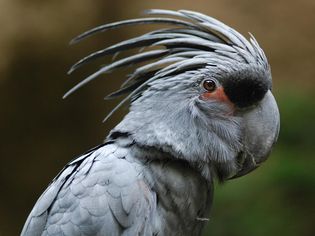
Black Palm Cockatoo (Goliath Cockatoo): Bird Species Profile
The largest cockatoo, the black palm cockatoo or goliath cockatoo, is strikingly beautiful. This sp...
Read More →
Green-Wing Macaw (Red and Green Macaw): Bird Species Profile
Second in size only to the hyacinth macaw, which is the largest parrot species, the green-wing maca...
Read More →
8 Popular Large Birds to Keep as Pets
Birds of all types and sizes are certainly captivating creatures, but some of the most impressive o...
Read More →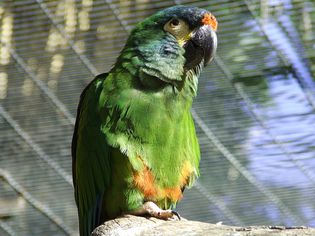
Illiger's Macaw (Blue-Winged Macaw): Bird Species Profile
Beautiful, playful, and charming, the Illiger's macaw has grown in popularity as an easily trainabl...
Read More →
Comments on "Scarlet Macaw: Bird Species Profile" :